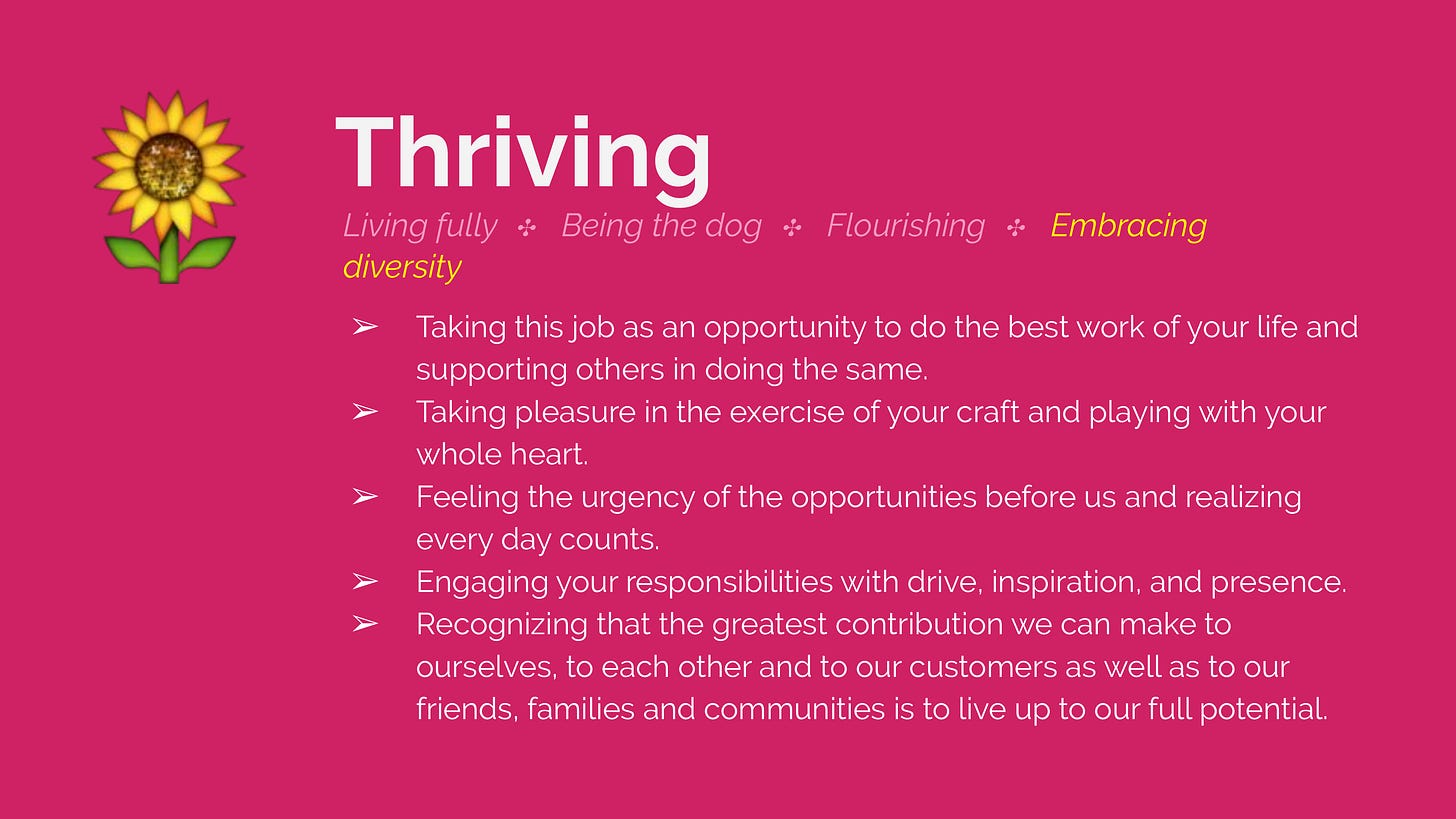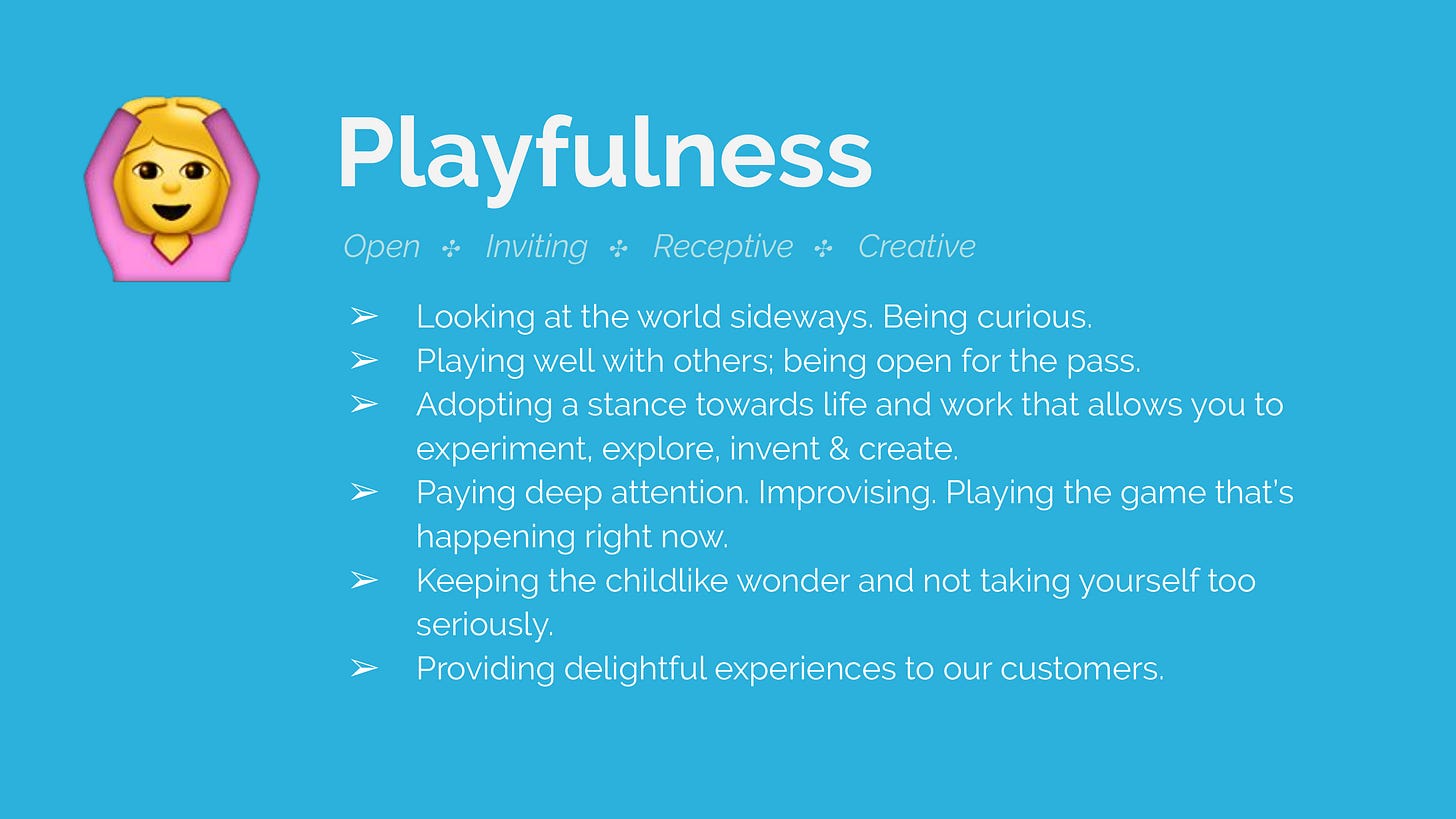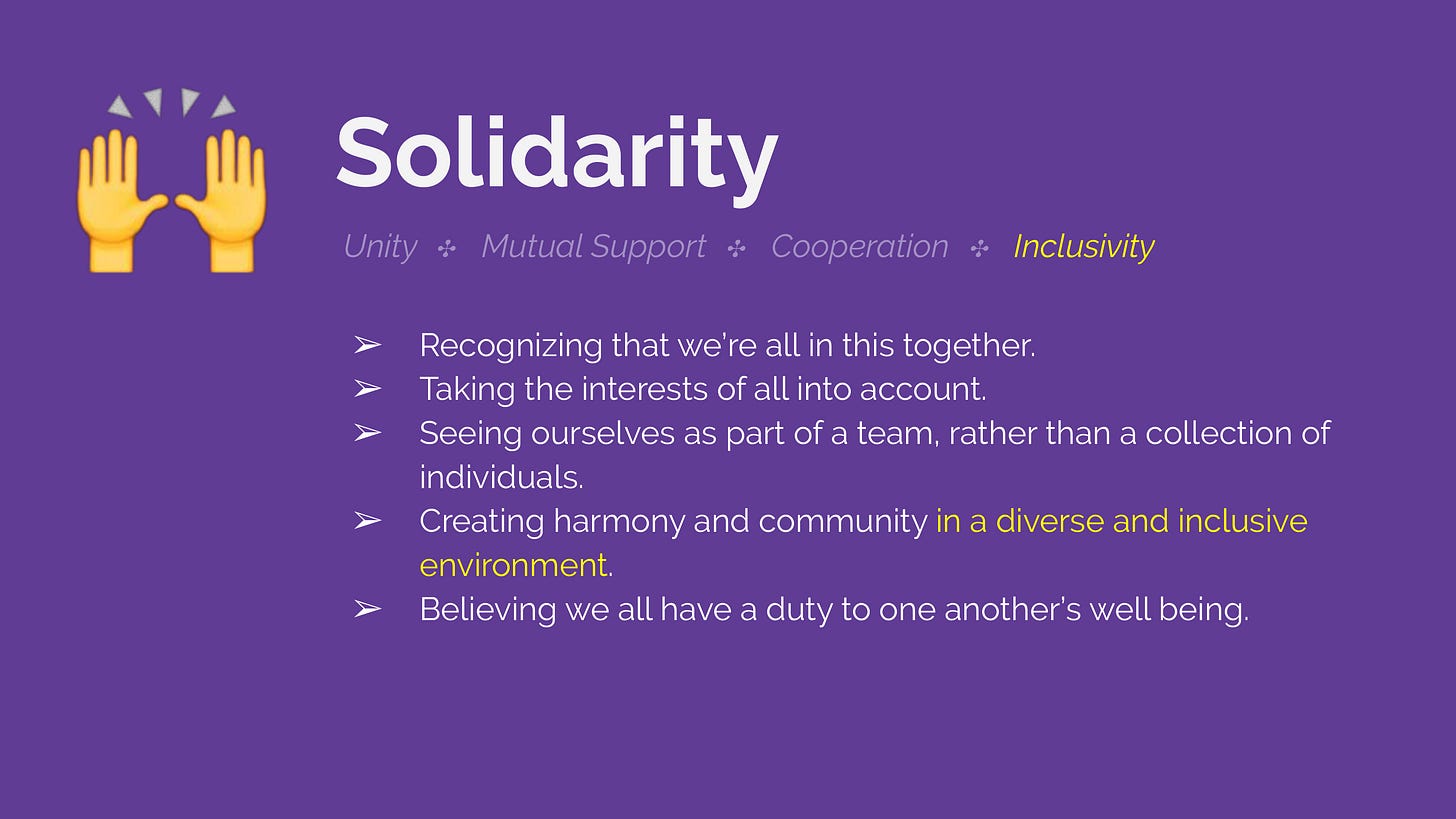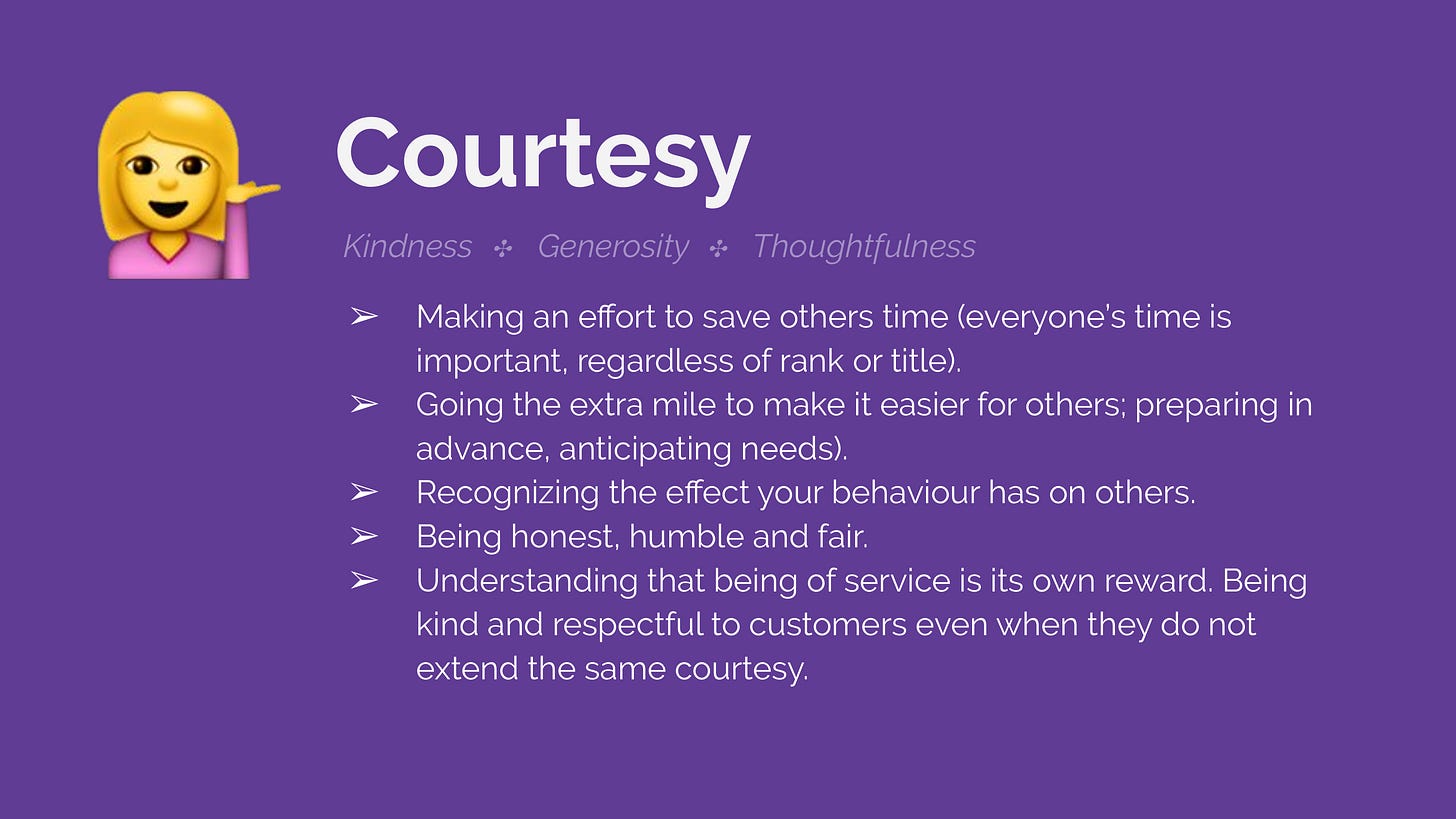How Slack Built its Culture: Part 2
Eating the goat. Shifting to Six Slack Values. Creating canonical stories for each value. Onboarding as a force multiplier.
Stewart stood before the team at a regular All Hands meeting. The screen behind him held a grainy image of a large snake with a huge bulge partway along its coiled body. Pointing to the image, he spoke.
Here (he looked back at the image and grinned) is a python or maybe an anaconda. If you look you’ll see it’s huge and distended. It’s caught and swallowed something large. Let’s say it’s a goat. Now it needs to digest the goat. It can’t do anything else until it does.
He paused for effect and seemed amused about the whole thing, as if to say, Am I really going through with this? Okay, here goes.
We (he continued) at Slack are the snake. We have caught and swallowed the goat. Our goat is that we’ve hired too many people too quickly and not made them feel like a part of Slack. Now we need to take a pause and finish what we’ve started. We need to eat the goat.
Eat the goat
‘Eat the goat’ became something said in meetings to explain decisions and priorities. “Yes, we’re going to get to that but first we have to eat the goat and make sure everyone is on the same page.” The phrase appeared in presentations. I heard it in hallways and read it in Slack.
We put a hold on all hiring. Until we got the new people we had already hired onboarded, aligned to our goals and well incorporated into their teams, we had to stop hiring and making the problem worse.
Behind the scenes, pretty much everything was held together with binding twine and gumption. Every process, system and practice we had created as we ramped up either broke or was about to break. We had grown from 40 to 200 employees. We could see 400 people at Slack on the horizon.
From the outside, our pathway seemed more stable all the time: growth in people, growth in customers, growth in the business. All good things! We had the money and momentum to make all our hopes happen. Yet our office was full of strangers with great intentions, energy and ambition, who were poorly equipped to work together. They lacked a shared history and shared sense of belonging.
No one said we’d hired too many people. Instead, we took responsibility for the problem and changed how we approached hiring and especially how we approached onboarding. There was a general sense that we hadn’t done a good enough job setting up new people to succeed at Slack. So we reinvented how we did it.
This Eat the Goat moment felt very much like a time when the company needed to grow up and put in place some foresight and process to serve its ambitions. It was painful. No one really wanted to do this. We had so much actual work to do! And at the same time, we all wanted to do amazing things with amazing people for a long time into the future! So we had to do this.
The net growth of adding a hundred people may seem small to many larger organizations. But to us at the time, it meant roughly a doubling of our size and lots of disoriented people and teams.
A small core team of well-aligned and like-minded folks had been mixed with a heterogenous blend of newcomers. The new folks brought a rich depth of expertise and experience. They were some of the best people on the planet at what they did. Damn, they were hot stuff. Experts.
But the old timers knew how to make decisions and get things done. They acted with confidence because they had grown up with Slack. The new folks needed some overall direction and onramps to the company to be effective. The old folks whipped past the onramps to the direct route. Something had to change.
I covered in the last chapter how we started to codify what it meant to work at Slack with the Four Slack Attributes — Smart, Humble, Hardworking and Collaborative. But it was clear the Attributes weren’t doing the job they need to do. They were lovely as aspirational statements of how to be in the world. But they didn’t help anyone with how to do things, how to make decisions, how to work together, what mattered to us. New folks needed to feel guided and equipped to succeed. They needed more.
So after many discussions and much work, a presentation appeared at another All Hands: the Six Slack Values.
Six Slack Values
It’s easy enough to list out the values: Craftsmanship, Empathy, Thriving, Courtesy, Playfulness, Solidarity. It was also easy enough to see that they resonated with people and felt like they represented the best versions of what we aspired to be.
What was much harder, and what I think we did a really good job with, was making the values applicable in people’s working lives. How to (as I mentioned above) make decisions with them? How to implement them into a workflow? How to hire someone with them in mind? What mattered to us?
To start connecting the Six Slack Values to how we did things, each value came with a short story to show how the value could be put into practice. The stories were tangible, repeatable and easy to understand. Anyone could share them. They might have sounded a bit corny to a cynical ear, but that also proved part of their appeal.
For the value of Craftsmanship, we wanted to go the extra mile for customers. The canonical story was about a cabinet maker who painted the back of the drawers. They didn’t paint the back of the drawers because anyone would ever see it. They painted the back of the drawers because they would know the job was fully done.
How did that same level of attention to detail show up respectively in anyone’s work? That was how we took on the challenge of Craftsmanship and holding ourselves and our teammates to a level of commitment. We wanted to live up to the value, so what did it mean for our job? When someone wanted to invoke the value of Craftsmanship they used the shorthand, paint the back of the drawer, and everyone at Slack knew what they meant. That’s how we did things.
Sometimes the values combined. For Empathy, we wanted to understand our customers’ needs so that we could be ready to meet them with another value, Courtesy.
What Time is the 3 O’clock Parade?
One of the articles we’d found and circulated early on as a story to illustrate what we aspired to was the Disney Institute’s What time is the 3 o’clock parade?
As our Guests are often excited and distracted by the myriad of sights and sounds in our Theme Parks, we know that when they ask this question, more than likely, they want to know more than just the start time of the parade. So, Cast Members will ask some additional questions to uncover what it is that the Guest really wants to know…such as, "What time will the parade get to me?" "When should I start waiting to get a good viewing spot?" and "Where is the best place to stand?"
Understanding the full question and its context became something we worked hard to achieve. Sure, we could simply answer the question with a factual answer. That’s 3 o’clock. But that missed the opportunity to unpack what the customer was really feeling and seeking. It also meant the customer had to do more work on a journey they were on for their first time, versus us doing the work for them on a journey we knew well and had made many times.
The prevailing wisdom of the time for writing to customers (because we were still doing most of our selling in writing) was to keep emails short and factual. This was right, mostly, and especially early on in an interaction when things tended to be more transactional. But as the communication got deeper and each party more invested, we knew there was an opening to do more and live up to both Empathy and Courtesy.
So we started adding in more information that contextualized the situation and had the potential to accelerate the conversation. If we knew the next question a customer was going ask would be about pricing, why not include pricing information? If they were going to worry about cancelling and billing options, why not include those as a snippet with a link to the full details in our Help section? We wanted to do as much of the work for them as possible.
What time is the 3 o’clock parade? became a shorthand for us with shared meaning. We’d use it in conversations like, maybe that’s a ‘3 o’clock parade question’ to mean that there was more to it than its surface level suggested. The question challenged us to pause and consider the situation and what we could do to see the opportunity in it. It was much more than just a nice bit of words and a companion emoji. It was how we wanted to work and how we were effective.
Onboarding as Force Multiplier
As the Six Slack Values rolled out, the whole company basically stopped to get dedicated training on them. Work across departments was put aside for discussions on what each Value meant. Departments picked up the general Values and stories and applied them to their own part of the organization.
In our Accounts team, I remember being part of the original discussion on what our values would be. Then very soon thereafter, seeing the All Hands presentation from Stewart as the Values were formalized back to everyone.
That seems exactly right, I remember thinking to myself as the presentation unfolded. That’s a formalized way of describing how we work and what makes our work special. I could see how we were living up to those values and how we could put them into practice in our daily work.
The pause for the whole company acted like a reset and like a delayed onboarding for some of the newer folks who had joined Slack. It acted like a process we all went through together, so we all knew what was expected in working together.
It also answered questions we may or may not have been asking but that proved essential. What are we all about? What matters to us? Why would someone want to work here? What might make Slack a poor fit for someone? What makes us different from other places? Where do we put our energy? How do we evaluate work? How do we want to work together and with the wider world?
Then we took that reset and applied it to all the fresh, new people who would be joining Slack, after we had eaten the goat. Onboarding became a big deal.
We built a classroom-style program that collected all new employees into groups of 20 or so folks. Each group spent their first week as a Slack employee in our San Francisco offices getting to know each other and getting to know Slack. Representative speakers presented to them about each part of the organization. It was intensive and I’d say it worked because everyone participated in it. Everyone! Even long-time Slack employees like me.
In short, onboarding for new employees became a big investment Slack committed to in a big way. And it came right from the top. For each cohort of 20, Stewart did the first day introduction and the last day close (or, if travelling, found another time to do the close, when his schedule allowed, or did it remotely by video). Then the first people we hired (after we had eaten the goat and restarted hiring) were people whose whole job was onboarding.
We had experienced being the snake, paralyzed by its need to feed and its capacity to eat the goat, and we didn’t want to feel that way again. Our ambitions meant growth, and growth meant lots more people.
Investing in onboarding started to act as a force multiplier so each new person at Slack started well equipped to succeed. They knew the company. They had a small group of peers they had gone through onboarding with that they stayed in touch with. They were ready to contribute and lead.
As a newer manager of people, I felt really grateful for the Six Slack Values. Prior to the formalization, I had improvised a lot. I think that had worked pretty well, but it also felt unscalable and uneven. Was I doing it right?
Now in interviews when candidates asked what it was like working at Slack, I heard myself say “the expectation is you’ll come here and do the best work of your life” — a line pretty much straight from the Thriving slide. When we had a disagreement in a conversation I found myself starting a reply with “Yes, and…” — a phrase that owed its origins to improvisational comedy and that was name checked on the Playfulness slide. The Six Slack Values got used pretty much every day at Slack.
And that’s what I’ll cover in more detail next week, in a third and last part of the How Slack Built its Culture section. How did the Six Slack Values get reflected in how we did things?
Do you have feedback or questions or something you want to see? Please let me know in the comments on this post!
Up next — How Slack Built its Culture, Part 3: Finding ourselves in a crisis not to be wasted. Struggling with paying people in Sales. Spreading signs.
PS: If you want to go deeper, my friends and former teammates at Slack, Johnny Rodgers and Ali Rayl, wrote terrifically about the behind the scenes of creating the Slack Values too.











A metaphor carries so much power. I’m curious how Stuart chose Eat the Goat. Was he able to verbalize what he was trying to convey and go looking for a photo or did the photo find him and an a-ha moment occured?
Slack’s onboarding was the best! Something I keep trying to recreate at every company I move onto 😊